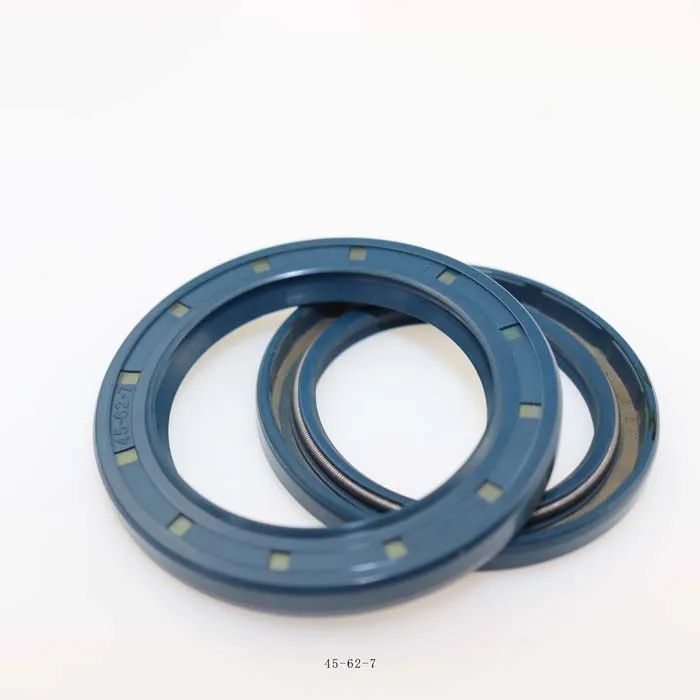Nov . 11, 2024 12:12 Back to list
wiper ring
Understanding Wiper Rings An Essential Component in Sealing Technology
Wiper rings play a critical role in various mechanical systems, particularly in hydraulic and pneumatic applications. These small yet vital components help ensure that machinery operates smoothly and efficiently by preventing the escape of fluids and contaminants. In this article, we will explore the function, design, materials, and applications of wiper rings, highlighting their importance in industrial settings.
What are Wiper Rings?
Wiper rings are a type of sealing device designed to remove contaminants from the surface of rods or pistons in hydraulic and pneumatic cylinders. As the cylinder operates, the wiper ring effectively wipes away debris, dirt, and moisture, preventing these harmful substances from entering the cylinder and causing damage to other seals or components. By maintaining a clean working environment, wiper rings contribute to the longevity and reliability of equipment.
Function and Design
The primary function of a wiper ring is to protect the internal sealing elements of a system. They act as a barrier to block potential contaminants while allowing the hydraulic fluid or air to flow freely. Wiper rings are typically installed at the exterior of a cylinder, where they come into contact with the rod or piston as it moves in and out of the cylinder.
In terms of design, wiper rings come in various shapes and sizes to accommodate different applications. They are often made with a lip or edge that provides the necessary wiping action against the moving surface. The geometry of wiper rings can vary, with some featuring a single lip, while others may have multiple lips to enhance sealing performance. The choice of design is crucial, as it must balance effective wiping action with minimal engagement force to prolong the lifespan of both the wiper ring and the sealing system.
Materials Used
wiper ring

The materials used to manufacture wiper rings are equally important in determining their performance and durability. Common materials include polyurethane, rubber, and other elastomers, which provide excellent flexibility and resistance to wear. Polyurethane, in particular, is favored for its superior abrasion resistance and ability to withstand high pressure and temperature variations. Additionally, some wiper rings may be produced from PTFE (Teflon) for applications requiring enhanced chemical resistance.
The selection of material largely depends on the specific application and operating conditions. For instance, in environments where exposure to harsh chemicals is a concern, a chemically resistant material would be necessary. Similarly, high-temperature applications will call for materials that can withstand elevated temperatures without losing their sealing properties.
Applications of Wiper Rings
Wiper rings are employed in a wide range of industries, including automotive, aerospace, manufacturing, and construction. In hydraulic systems, they are commonly found in excavators, forklifts, and other heavy machinery to ensure smooth operation by preventing dirt and debris from entering critical components. In the automotive sector, wiper rings can be found in brake systems and power steering units.
In addition to traditional industries, wiper rings are increasingly being utilized in newer technologies, such as robotics and automation systems. As these systems become more complex and integrated, the importance of effective sealing solutions and the role of wiper rings cannot be overstated.
Conclusion
In summary, wiper rings are an essential component within sealing technology, playing a vital role in preserving the integrity of hydraulic and pneumatic systems. Their ability to effectively wipe away contaminants and protect internal seals is crucial for the longevity and efficiency of machinery. With various designs and materials available, manufacturers can tailor wiper rings to meet specific application requirements, ensuring optimal performance across a range of industries. As technology advances, the importance of these small yet mighty components will only continue to grow, reinforcing their place in the manufacturing and engineering sectors.
-
The Trans-formative Journey of Wheel Hub Oil Seals
NewsJun.06,2025
-
Graphene-Enhanced Oil Seals: Revolutionizing High-Pressure Oil Sealing
NewsJun.06,2025
-
Future of Hydraulic Sealing: Advanced Intelligent TCN Oil Seals
NewsJun.06,2025
-
Don’t Let a Broken TCV Oil Seal Ruin Your Day
NewsJun.06,2025
-
Bio-Inspired Dust Seals for Better Sealing Performance
NewsJun.06,2025
-
Biodegradable and Sustainable Hydraulic Seal Materials
NewsJun.06,2025
-
Top Oil Seal Solutions for Your Industrial Needs
NewsMay.22,2025
Products categories
















